Get screenshot as Canvas or Jpeg Blob / ArrayBuffer using getDisplayMedia API:
FIX 1: Use the getUserMedia with chromeMediaSource only for Electron.js
FIX 2: Throw error instead return null object
FIX 3: Fix demo to prevent the error: getDisplayMedia must be called from a user gesture handler
// docs: https://developer.mozilla.org/en-US/docs/Web/API/MediaDevices/getDisplayMedia
// see: https://www.webrtc-experiment.com/Pluginfree-Screen-Sharing/#20893521368186473
// see: https://github.com/muaz-khan/WebRTC-Experiment/blob/master/Pluginfree-Screen-Sharing/conference.js
function getDisplayMedia(options) {
if (navigator.mediaDevices && navigator.mediaDevices.getDisplayMedia) {
return navigator.mediaDevices.getDisplayMedia(options)
}
if (navigator.getDisplayMedia) {
return navigator.getDisplayMedia(options)
}
if (navigator.webkitGetDisplayMedia) {
return navigator.webkitGetDisplayMedia(options)
}
if (navigator.mozGetDisplayMedia) {
return navigator.mozGetDisplayMedia(options)
}
throw new Error('getDisplayMedia is not defined')
}
function getUserMedia(options) {
if (navigator.mediaDevices && navigator.mediaDevices.getUserMedia) {
return navigator.mediaDevices.getUserMedia(options)
}
if (navigator.getUserMedia) {
return navigator.getUserMedia(options)
}
if (navigator.webkitGetUserMedia) {
return navigator.webkitGetUserMedia(options)
}
if (navigator.mozGetUserMedia) {
return navigator.mozGetUserMedia(options)
}
throw new Error('getUserMedia is not defined')
}
async function takeScreenshotStream() {
// see: https://developer.mozilla.org/en-US/docs/Web/API/Window/screen
const width = screen.width * (window.devicePixelRatio || 1)
const height = screen.height * (window.devicePixelRatio || 1)
const errors = []
let stream
try {
stream = await getDisplayMedia({
audio: false,
// see: https://developer.mozilla.org/en-US/docs/Web/API/MediaStreamConstraints/video
video: {
width,
height,
frameRate: 1,
},
})
} catch (ex) {
errors.push(ex)
}
// for electron js
if (navigator.userAgent.indexOf('Electron') >= 0) {
try {
stream = await getUserMedia({
audio: false,
video: {
mandatory: {
chromeMediaSource: 'desktop',
// chromeMediaSourceId: source.id,
minWidth : width,
maxWidth : width,
minHeight : height,
maxHeight : height,
},
},
})
} catch (ex) {
errors.push(ex)
}
}
if (errors.length) {
console.debug(...errors)
if (!stream) {
throw errors[errors.length - 1]
}
}
return stream
}
async function takeScreenshotCanvas() {
const stream = await takeScreenshotStream()
// from: https://stackoverflow.com/a/57665309/5221762
const video = document.createElement('video')
const result = await new Promise((resolve, reject) => {
video.onloadedmetadata = () => {
video.play()
video.pause()
// from: https://github.com/kasprownik/electron-screencapture/blob/master/index.js
const canvas = document.createElement('canvas')
canvas.width = video.videoWidth
canvas.height = video.videoHeight
const context = canvas.getContext('2d')
// see: https://developer.mozilla.org/en-US/docs/Web/API/HTMLVideoElement
context.drawImage(video, 0, 0, video.videoWidth, video.videoHeight)
resolve(canvas)
}
video.srcObject = stream
})
stream.getTracks().forEach(function (track) {
track.stop()
})
if (result == null) {
throw new Error('Cannot take canvas screenshot')
}
return result
}
// from: https://stackoverflow.com/a/46182044/5221762
function getJpegBlob(canvas) {
return new Promise((resolve, reject) => {
// docs: https://developer.mozilla.org/en-US/docs/Web/API/HTMLCanvasElement/toBlob
canvas.toBlob(blob => resolve(blob), 'image/jpeg', 0.95)
})
}
async function getJpegBytes(canvas) {
const blob = await getJpegBlob(canvas)
return new Promise((resolve, reject) => {
const fileReader = new FileReader()
fileReader.addEventListener('loadend', function () {
if (this.error) {
reject(this.error)
return
}
resolve(this.result)
})
fileReader.readAsArrayBuffer(blob)
})
}
async function takeScreenshotJpegBlob() {
const canvas = await takeScreenshotCanvas()
return getJpegBlob(canvas)
}
async function takeScreenshotJpegBytes() {
const canvas = await takeScreenshotCanvas()
return getJpegBytes(canvas)
}
function blobToCanvas(blob, maxWidth, maxHeight) {
return new Promise((resolve, reject) => {
const img = new Image()
img.onload = function () {
const canvas = document.createElement('canvas')
const scale = Math.min(
1,
maxWidth ? maxWidth / img.width : 1,
maxHeight ? maxHeight / img.height : 1,
)
canvas.width = img.width * scale
canvas.height = img.height * scale
const ctx = canvas.getContext('2d')
ctx.drawImage(img, 0, 0, img.width, img.height, 0, 0, canvas.width, canvas.height)
resolve(canvas)
}
img.onerror = () => {
reject(new Error('Error load blob to Image'))
}
img.src = URL.createObjectURL(blob)
})
}
DEMO:
document.body.onclick = async () => {
// take the screenshot
var screenshotJpegBlob = await takeScreenshotJpegBlob()
// show preview with max size 300 x 300 px
var previewCanvas = await blobToCanvas(screenshotJpegBlob, 300, 300)
previewCanvas.style.position = 'fixed'
document.body.appendChild(previewCanvas)
// send it to the server
var formdata = new FormData()
formdata.append("screenshot", screenshotJpegBlob)
await fetch('https://your-web-site.com/', {
method: 'POST',
body: formdata,
'Content-Type' : "multipart/form-data",
})
}
// and click on the page
 Screenshot by Jason Small, posted in a duplicate question.
Screenshot by Jason Small, posted in a duplicate question.